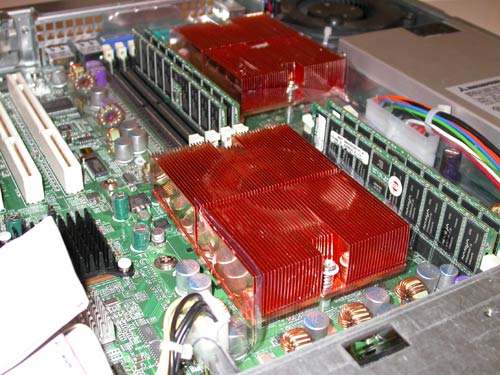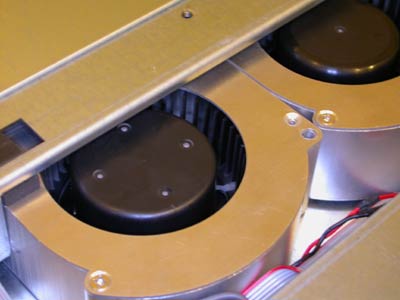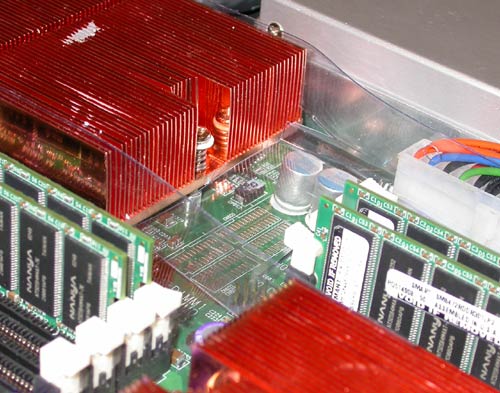AMD Opteron Coverage - Part 3: The First Servers Arrive
by Anand Lal Shimpi on April 23, 2003 9:41 PM EST- Posted in
- IT Computing
Since the A1740 uses the same motherboard as the Appro 1100H, the internal layout is virtually identical; thankfully Einux did ship the server with a PCI-X riser card. Getting access to the internals of the Einux server isn't as easy as the Appro, but it is still fairly simple; two screws hold the only two panels of the server in place.

With the same motherboard as the Appro server, looking at the motherboard compartment left us with a feeling of déjà vu. The only major difference between the two servers is the cooling; while both use blowers, the Einux solution uses slightly better made blowers that are unfortunately more difficult to replace.


Cool air is drawn in primarily from ventilation holes at the top of the chassis, rather than only from the front drive bays, which does reduce the amount of cooling that the hard drives get.

The cold air is channeled over the CPUs using clear pieces of plastic; this is a more elegant solution than Appro's because the tops of the heatsinks are not covered with a paper insulator. It is debatable as to which solution offers higher cooling performance, although both had no problems contending with the needs of our Opteron 244s. In the Einux case, the CPU farthest from the coolers (CPU1) did seem to receive slightly worse cooling than in the Appro. The difference in cooling performance could be do to slower/lesser volume blowers or the fact that without a complete tunnel used to move air around a good deal of the air is wasted on cooling other parts of the case.










0 Comments
View All Comments